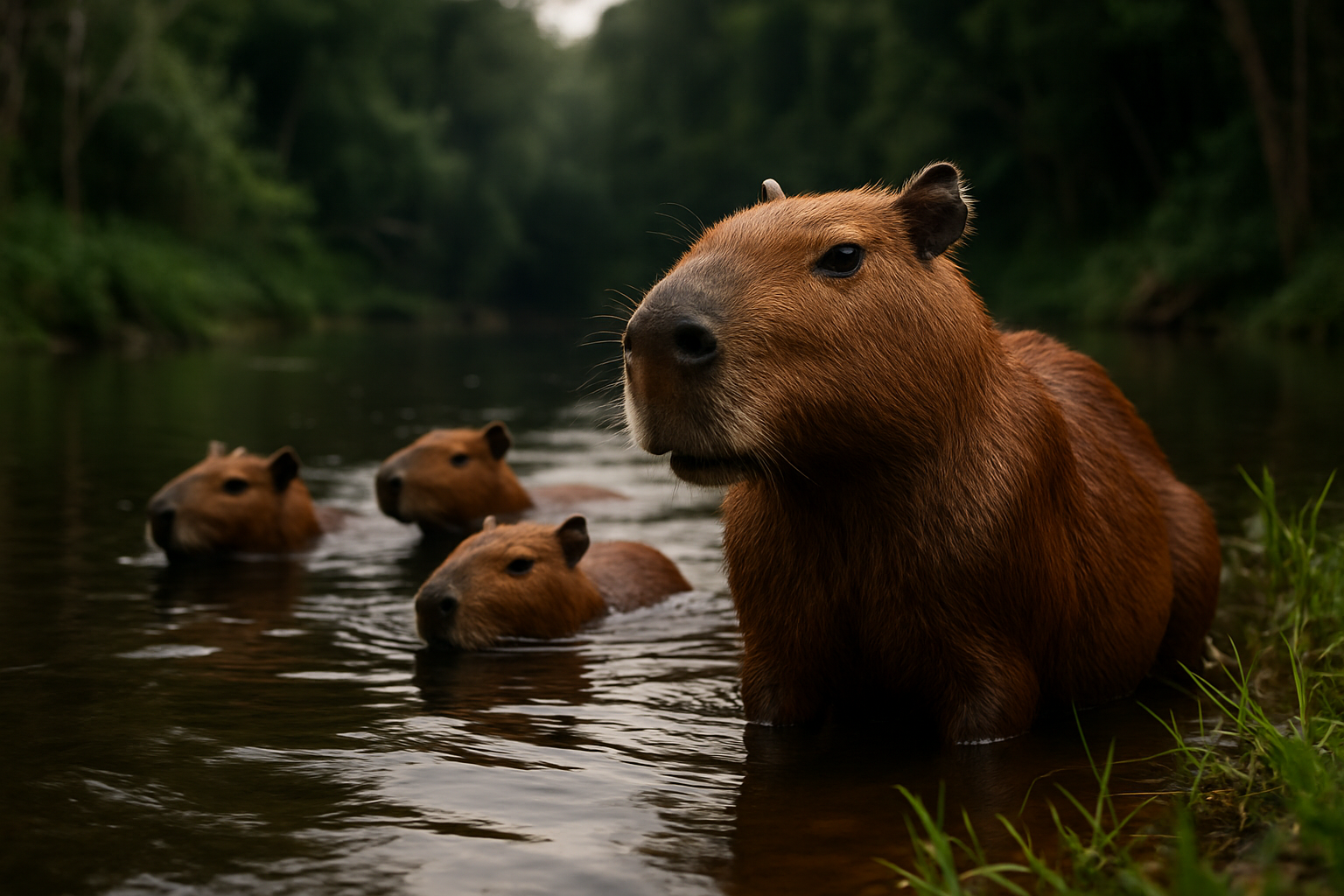Unraveling the Enigma of Capybara-Human Bonds
In the realm of unconventional animal companionship, a surprising contender has emerged: the capybara. These giant rodents, native to South America, are capturing hearts worldwide with their gentle demeanor and unique social behaviors. This article delves into the fascinating world of capybara-human interactions, exploring the growing trend of keeping these oversized guinea pigs as pets and their impact on animal welfare and conservation efforts.

The Capybara’s Journey from Wild to Companion
Capybaras’ history as companion animals is relatively recent, tracing back to the late 20th century. Initially kept on farms in South America for their meat and hide, these gregarious creatures soon caught the attention of animal enthusiasts for their friendly disposition. As awareness grew, so did the desire to forge closer bonds with these unusual animals.
In their native habitats, capybaras live in large social groups, often numbering up to 100 individuals. This inherent sociability has made them surprisingly adaptable to human interaction. Their calm demeanor and ability to form strong bonds with their caregivers have contributed to their rising popularity as exotic pets.
The Legal Landscape of Capybara Ownership
The legality of keeping capybaras as pets varies widely across different regions. In some South American countries, where they are native, regulations are more lenient. However, in many parts of North America and Europe, owning a capybara often requires special permits or may be outright prohibited.
In the United States, for instance, capybara ownership is legal in some states but banned in others. Prospective owners must navigate a complex web of local, state, and federal regulations. This legal ambiguity has led to debates about the ethics of keeping these semi-aquatic mammals in domestic settings.
Capybara Care: Challenges and Considerations
Caring for a capybara is no small feat. These animals have specific needs that can be challenging to meet in a typical household environment. They require ample space, including a large water source for swimming, as well as a varied diet of grasses, vegetables, and specialized feed.
Capybaras are also highly social animals, often struggling when kept alone. Many experts recommend keeping them in pairs or small groups to ensure their psychological well-being. Additionally, their need for regular veterinary care from exotic animal specialists can be costly, with estimates ranging from $500 to $1000 annually for routine checkups and treatments.
The Capybara Effect on Conservation Awareness
Interestingly, the growing fascination with capybaras has had unexpected benefits for conservation efforts. As more people become enamored with these charismatic creatures, there’s been an increased interest in their natural habitats and the challenges they face in the wild.
Conservation organizations have reported a surge in donations and volunteer interest related to capybara preservation projects. This newfound attention has also sparked discussions about the importance of wetland conservation, as capybaras play a crucial role in these ecosystems.
Therapeutic Potential of Capybara Interactions
One of the most intriguing developments in capybara-human relationships is their emerging role in animal-assisted therapy. Some facilities have begun incorporating capybaras into their therapy programs, noting their calming presence and non-judgmental nature as beneficial for individuals with anxiety, depression, or autism spectrum disorders.
While research in this area is still in its infancy, anecdotal evidence suggests that interactions with capybaras can have positive effects on human well-being. Their large size combined with their gentle temperament seems to provide a unique therapeutic experience, different from that offered by more traditional therapy animals like dogs or horses.
Ethical Considerations and Future Outlook
As the trend of capybara companionship continues to grow, it raises important ethical questions about the responsibilities of exotic pet ownership. Critics argue that keeping capybaras as pets may compromise their welfare and contribute to the exotic pet trade, which can have detrimental effects on wild populations.
On the other hand, proponents suggest that responsible ownership can foster greater appreciation for these animals and contribute to conservation efforts. The debate highlights the need for comprehensive regulations and education to ensure the well-being of both capybaras and their human companions.
Looking ahead, the capybara-human bond phenomenon presents both challenges and opportunities. It underscores the need for more research into the long-term effects of keeping these animals in domestic settings and their potential contributions to human health and well-being.
As we continue to explore and understand the complex relationships between humans and capybaras, it’s clear that these extraordinary rodents are more than just an internet sensation. They represent a unique intersection of wildlife conservation, animal welfare, and human-animal bonding, offering valuable insights into our evolving relationship with the natural world.





